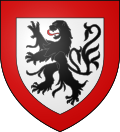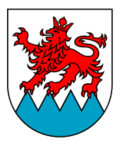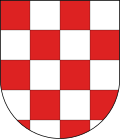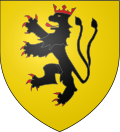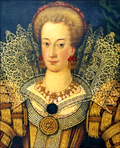Picture Name Father Birth Marriage Became Margravine Ceased to be Margravine Death Spouse Elisabeth of Brandenburg-Ansbach-Kulmbach Frederick I, Margrave of Brandenburg-Ansbach Hohenzollern ) 25 March 1494 29 September/7 October 1510 1 August 1515husband's accession 31 May 1518 Ernest Kunigunde of Brandenburg-Kulmbach Casimir, Margrave of Brandenburg-Bayreuth Hohenzollern ) 17 June 1523 10 March 1551 6 February 1553husband's accession 27 February 1558 Charles II Anna of the Palatinate-Veldenz Rupert, Count Palatine of Veldenz Wittelsbach ) 12 November 1540 1 August 1558 23 March 1577husband's death 30 March 1586 Anne of Ostfriesland Edzard II, Count of East Frisia Cirksena ) 26 June 1562 21 December 1585 14 April 1604husband's death 21 April 1621 Ernest Frederick Juliane Ursula of Salm-Neufville Frederick, Wildgrave and Rhinegrave Salm-Neufville Salm-Neufville ) 28 September 1572 2 September 1592 14 April 1604husband's accession 30 April 1614 George Frederick Agatha of Erbach George III, Count of Erbach Erbach ) 16 May 1581 21/23 October 1614 30 April 1621 Barbara of Württemberg Frederick I, Duke of Württemberg Württemberg ) 4 December 1593 21 December 1616 22 April 1622husband's accession 8 May 1627 Frederick V Eleonore of Solms-Laubach Albert Otto I, Count of Solms-Laubach Solms-Laubach ) 9 September 1605 8 October 1627 6 July 1633 Marie Elisabeth of Waldeck-Eisenberg Wolrad IV, Count of Waldeck-Eisenberg Waldeck-Eisenberg ) 2 September 1608 21 January 1634 19 February 1643 Anna Maria of Hohen-Geroldseck Jacob, Count of Hohen-Geroldseck Hohengeroldseck ) 28 October 1593 13 February 1644 25 May 1649 Elisabeth Eusebia of Fürstenberg Christoph II, Count of Fürstenberg Fürstenberg ) - 20 May 1650 8 September 1659husband's death 8 June 1676 Christine Magdalene of the Palatinate-Zweibrücken John Casimir, Count Palatine of Kleeburg Wittelsbach ) 15 May 1616 30 November 1642 8 September 1659husband's accession 4 August 1662 Frederick VI Auguste Marie of Holstein-Gottorp Frederick III, Duke of Holstein-Gottorp Holstein-Gottorp ) 6 February 1649 15 May 1670 10 January 1677husband's accession 25 June 1709husband's death 25 April 1728 Frederick VII Magnus Magdalena Wilhelmine of Württemberg William Louis, Duke of Württemberg Württemberg ) 7 November 1677 27 June 1697 25 June 1709husband's accession 12 May 1738husband's death 30 October 1742 Charles III William Caroline Louise of Hesse-Darmstadt Louis VIII, Landgrave of Hesse-Darmstadt Hesse-Darmstadt ) 11 July 1723 28 January 1751 21 October 1771Unification of Baden 8 April 1783 Charles Frederick 















